GCB Kunstlexikon
SIMON FUJIWARA
KUNSTWERKE SIMON FUJIWARA
Vermittlungsfilm | KUB 2018.01 | Simon Fujiwara | Hope House | Kunsthaus Bregenz | Künstler Simon Fujiwara spricht über seine aktuelle Ausstellung im Kunsthaus Bregenz. JETZT MIT DEUTSCHEN UNTERTITELN. Die Ausstellung läuft noch bis zum 2. April 2018. Alle Informationen unter: kunsthaus-bregenz.at | YouTube
FILM | VIDEO SIMON FUJIWARA
Simon Fujiwara Interview | We Want Images to Deceive Us | Louisiana Channel | We had the pleasure of talking to British-Japanese artist Simon Fujiwara, who has achieved exceptional recognition and acclaim for his complex installations that incorporate a wide range of media. With his works ‘Joanne’, ‘Likeness’ and ‘The Antoinette Effect’ as a starting point, Fujiwara talks about our indoctrination and commodification through images, and about inhabiting other people’s realities. Fujiwara was a scholarship student at one of the oldest all-boys boarding schools in the world, Harrow School, when he met the young art teacher Joanne: “We bonded because we were both arriving in this strange place very much from the outside, and were trying to navigate it somehow in the safety of the art department.” The then 16-year-old Fujiwara talked to Joanne, a former beauty queen, about the conflict she felt in herself: “Being a beauty-queen is a highly objectifying process – self-elected objectification – and being an artist, you are often objectifying. You’re trying to turn the world around you into an object, an image, a static thing, frozen.” A decade after Fujiwara had left Harrow, Joanne had fallen victim to a tabloid newspaper scandal – boys from the school had found and circulated topless photographs of her taken by a female photography teacher. He began thinking about doing a project with Joanne and contacted her three or four years later. Meeting Joanne again, Fujiwara “was so shocked by the violence of my own gaze on her, completely commodifying her.” He realised how colonised he had become by images of women in advertising: “I myself had been indoctrinated against my own better knowledge into a way of looking at the world, and her beauty was a great barrier.” The work ‘Joanne’ (2016/2018) therefore also deals with this: “This product-nature of Joanne’s biology is in many ways at the crux of the way in which she became an image and became distributed, and therefore became this press-sensation that was selling newspapers.” The framework of Fujiwara’s work became a battle against the topless image of Joanne still circulating the internet, as well as an attempt to rebrand her: “Could we obliterate this original image with more images?” Fujiwara also talks about his video work about Anne Frank, ‘Likeness’ (2018), which he describes as “an exploration of the way in which Anne has been created as a mass media icon, as a product, as a symbol, and how she’s then distributed and what she’s used for.” Taking off in the way the world had already treated Anne Frank, he created a wax figure of her interacting with a robotic camera, making us aware of “the transactional nature of her as an image.” Finally, Fujiwara discusses ‘The Antoinette Effect’ (2019) and how Marie Antoinette lived in a time where printing had become cheap, and images of her consequently reached hundreds of thousands: “In this sense, she was an early celebrity and a woman who was clearly understanding her role as an objectified person.” Looking at the three works, Fujiwara realised, that he had been tracing some kind of history through Marie Antoinette, Anne Frank and Joanne “that perhaps expose or put a light on how we got to the world we got to today.” Simon Fujiwara (b. 1982) is a British-Japanese artist, who addresses the inherent contradictions of image and narrative making, exploring the mechanisms of identity construction for both individuals and societies. Fujiwara works in a wide range of mediums –from sculpture and installation to video and painting. His work is shown worldwide including at Tate St. Ives in Cornwall, Palais de Tokyo in Paris, MoMA in New York, Power Plant Contemporary Art Gallery in Toronto, Mori Art Museum in Tokyo and the Irish Museum of Modern Art in Dublin. He has also participated in the Venice Biennale (2009), the Shanghai Biennial (2012) and the Sharjah Biennial (2013). Fujiwara has received numerous honours including the prestigious Baloise Art Prize (2010) at Art Basel and the Cartier Award (2010) at Frieze Art Fair. He lives and works in Berlin. Simon Fujiwara was interviewed by Kasper Bech Dyg at Arken Museum of Modern Art in Ishøj, Denmark in September 2019 in connection with the exhibition ‘Simon Fujiwara – Joanne’. | For full list of works by Simon Fujiwara shown in the video, please see: channel.louisiana.dk | Camera: Jakob Solbakken | Produced and edited by Kasper Bech Dyg| Copyright Louisiana Channel | Louisiana Museum of Modern Art | 2019 | Supported by Nordea-fonden | YouTube
SIMON FUJIWARA
KUNSTWERKE SIMON FUJIWARA
Vermittlungsfilm | KUB 2018.01 | Simon Fujiwara | Hope House | Kunsthaus Bregenz | Künstler Simon Fujiwara spricht über seine aktuelle Ausstellung im Kunsthaus Bregenz. JETZT MIT DEUTSCHEN UNTERTITELN. Die Ausstellung läuft noch bis zum 2. April 2018. Alle Informationen unter: kunsthaus-bregenz.at | YouTube
FILM | VIDEO SIMON FUJIWARA
Simon Fujiwara Interview | We Want Images to Deceive Us | Louisiana Channel | We had the pleasure of talking to British-Japanese artist Simon Fujiwara, who has achieved exceptional recognition and acclaim for his complex installations that incorporate a wide range of media. With his works ‘Joanne’, ‘Likeness’ and ‘The Antoinette Effect’ as a starting point, Fujiwara talks about our indoctrination and commodification through images, and about inhabiting other people’s realities. Fujiwara was a scholarship student at one of the oldest all-boys boarding schools in the world, Harrow School, when he met the young art teacher Joanne: “We bonded because we were both arriving in this strange place very much from the outside, and were trying to navigate it somehow in the safety of the art department.” The then 16-year-old Fujiwara talked to Joanne, a former beauty queen, about the conflict she felt in herself: “Being a beauty-queen is a highly objectifying process – self-elected objectification – and being an artist, you are often objectifying. You’re trying to turn the world around you into an object, an image, a static thing, frozen.” A decade after Fujiwara had left Harrow, Joanne had fallen victim to a tabloid newspaper scandal – boys from the school had found and circulated topless photographs of her taken by a female photography teacher. He began thinking about doing a project with Joanne and contacted her three or four years later. Meeting Joanne again, Fujiwara “was so shocked by the violence of my own gaze on her, completely commodifying her.” He realised how colonised he had become by images of women in advertising: “I myself had been indoctrinated against my own better knowledge into a way of looking at the world, and her beauty was a great barrier.” The work ‘Joanne’ (2016/2018) therefore also deals with this: “This product-nature of Joanne’s biology is in many ways at the crux of the way in which she became an image and became distributed, and therefore became this press-sensation that was selling newspapers.” The framework of Fujiwara’s work became a battle against the topless image of Joanne still circulating the internet, as well as an attempt to rebrand her: “Could we obliterate this original image with more images?” Fujiwara also talks about his video work about Anne Frank, ‘Likeness’ (2018), which he describes as “an exploration of the way in which Anne has been created as a mass media icon, as a product, as a symbol, and how she’s then distributed and what she’s used for.” Taking off in the way the world had already treated Anne Frank, he created a wax figure of her interacting with a robotic camera, making us aware of “the transactional nature of her as an image.” Finally, Fujiwara discusses ‘The Antoinette Effect’ (2019) and how Marie Antoinette lived in a time where printing had become cheap, and images of her consequently reached hundreds of thousands: “In this sense, she was an early celebrity and a woman who was clearly understanding her role as an objectified person.” Looking at the three works, Fujiwara realised, that he had been tracing some kind of history through Marie Antoinette, Anne Frank and Joanne “that perhaps expose or put a light on how we got to the world we got to today.” Simon Fujiwara (b. 1982) is a British-Japanese artist, who addresses the inherent contradictions of image and narrative making, exploring the mechanisms of identity construction for both individuals and societies. Fujiwara works in a wide range of mediums –from sculpture and installation to video and painting. His work is shown worldwide including at Tate St. Ives in Cornwall, Palais de Tokyo in Paris, MoMA in New York, Power Plant Contemporary Art Gallery in Toronto, Mori Art Museum in Tokyo and the Irish Museum of Modern Art in Dublin. He has also participated in the Venice Biennale (2009), the Shanghai Biennial (2012) and the Sharjah Biennial (2013). Fujiwara has received numerous honours including the prestigious Baloise Art Prize (2010) at Art Basel and the Cartier Award (2010) at Frieze Art Fair. He lives and works in Berlin. Simon Fujiwara was interviewed by Kasper Bech Dyg at Arken Museum of Modern Art in Ishøj, Denmark in September 2019 in connection with the exhibition ‘Simon Fujiwara – Joanne’. | For full list of works by Simon Fujiwara shown in the video, please see: channel.louisiana.dk | Camera: Jakob Solbakken | Produced and edited by Kasper Bech Dyg| Copyright Louisiana Channel | Louisiana Museum of Modern Art | 2019 | Supported by Nordea-fonden | YouTube
SIMON FUJIWARA
KUNSTWERKE SIMON FUJIWARA
Vermittlungsfilm | KUB 2018.01 | Simon Fujiwara | Hope House | Kunsthaus Bregenz | Künstler Simon Fujiwara spricht über seine aktuelle Ausstellung im Kunsthaus Bregenz. JETZT MIT DEUTSCHEN UNTERTITELN. Die Ausstellung läuft noch bis zum 2. April 2018. Alle Informationen unter: kunsthaus-bregenz.at | YouTube
FILM | VIDEO SIMON FUJIWARA
Simon Fujiwara Interview | We Want Images to Deceive Us | Louisiana Channel | We had the pleasure of talking to British-Japanese artist Simon Fujiwara, who has achieved exceptional recognition and acclaim for his complex installations that incorporate a wide range of media. With his works ‘Joanne’, ‘Likeness’ and ‘The Antoinette Effect’ as a starting point, Fujiwara talks about our indoctrination and commodification through images, and about inhabiting other people’s realities. Fujiwara was a scholarship student at one of the oldest all-boys boarding schools in the world, Harrow School, when he met the young art teacher Joanne: “We bonded because we were both arriving in this strange place very much from the outside, and were trying to navigate it somehow in the safety of the art department.” The then 16-year-old Fujiwara talked to Joanne, a former beauty queen, about the conflict she felt in herself: “Being a beauty-queen is a highly objectifying process – self-elected objectification – and being an artist, you are often objectifying. You’re trying to turn the world around you into an object, an image, a static thing, frozen.” A decade after Fujiwara had left Harrow, Joanne had fallen victim to a tabloid newspaper scandal – boys from the school had found and circulated topless photographs of her taken by a female photography teacher. He began thinking about doing a project with Joanne and contacted her three or four years later. Meeting Joanne again, Fujiwara “was so shocked by the violence of my own gaze on her, completely commodifying her.” He realised how colonised he had become by images of women in advertising: “I myself had been indoctrinated against my own better knowledge into a way of looking at the world, and her beauty was a great barrier.” The work ‘Joanne’ (2016/2018) therefore also deals with this: “This product-nature of Joanne’s biology is in many ways at the crux of the way in which she became an image and became distributed, and therefore became this press-sensation that was selling newspapers.” The framework of Fujiwara’s work became a battle against the topless image of Joanne still circulating the internet, as well as an attempt to rebrand her: “Could we obliterate this original image with more images?” Fujiwara also talks about his video work about Anne Frank, ‘Likeness’ (2018), which he describes as “an exploration of the way in which Anne has been created as a mass media icon, as a product, as a symbol, and how she’s then distributed and what she’s used for.” Taking off in the way the world had already treated Anne Frank, he created a wax figure of her interacting with a robotic camera, making us aware of “the transactional nature of her as an image.” Finally, Fujiwara discusses ‘The Antoinette Effect’ (2019) and how Marie Antoinette lived in a time where printing had become cheap, and images of her consequently reached hundreds of thousands: “In this sense, she was an early celebrity and a woman who was clearly understanding her role as an objectified person.” Looking at the three works, Fujiwara realised, that he had been tracing some kind of history through Marie Antoinette, Anne Frank and Joanne “that perhaps expose or put a light on how we got to the world we got to today.” Simon Fujiwara (b. 1982) is a British-Japanese artist, who addresses the inherent contradictions of image and narrative making, exploring the mechanisms of identity construction for both individuals and societies. Fujiwara works in a wide range of mediums –from sculpture and installation to video and painting. His work is shown worldwide including at Tate St. Ives in Cornwall, Palais de Tokyo in Paris, MoMA in New York, Power Plant Contemporary Art Gallery in Toronto, Mori Art Museum in Tokyo and the Irish Museum of Modern Art in Dublin. He has also participated in the Venice Biennale (2009), the Shanghai Biennial (2012) and the Sharjah Biennial (2013). Fujiwara has received numerous honours including the prestigious Baloise Art Prize (2010) at Art Basel and the Cartier Award (2010) at Frieze Art Fair. He lives and works in Berlin. Simon Fujiwara was interviewed by Kasper Bech Dyg at Arken Museum of Modern Art in Ishøj, Denmark in September 2019 in connection with the exhibition ‘Simon Fujiwara – Joanne’. | For full list of works by Simon Fujiwara shown in the video, please see: channel.louisiana.dk | Camera: Jakob Solbakken | Produced and edited by Kasper Bech Dyg| Copyright Louisiana Channel | Louisiana Museum of Modern Art | 2019 | Supported by Nordea-fonden | YouTube



